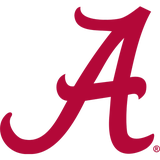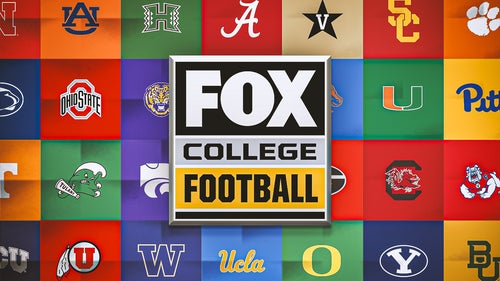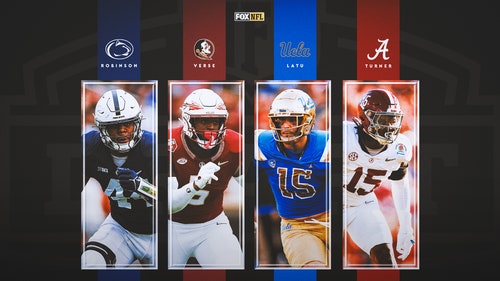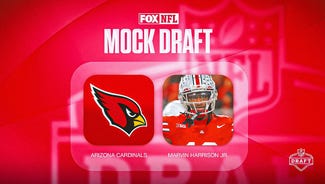
NCAA Basketball: Biggest disappointments heading into conference play
Dec 21, 2016; Austin, TX, USA; Texas Longhorns head coach Shaka Smart reacts against the UAB Blazers during the second half at the Frank Erwin Center. The Longhorns won 96-60. Mandatory Credit: Brendan Maloney-USA TODAY Sports
What are the biggest NCAA basketball disappointments as we head into conference play?
A majority of college basketball teams have already wrapped up their non-conference schedule and are ready to deal with the gauntlet that is conference play.
Each team received an opportunity to step back over the last few days and enjoy the holiday weekend, but now this final week of December is time for teams to get into the groove of the arduous slate that is to follow.
Before we dive into predictions and projections for the “second half” of the college hoops season, it’s important to look at the teams, players and conferences that have underachieved thus far.
I will put together a list of the top five disappointments through the first two months of the season. We have three teams that have basically fell off the cliff, one player who has lived up to his potential despite returning to college and a conference that is looking at potentially earning just one or two bids to the NCAA Tournament.
There are others that are worthy of being placed on this list, including San Diego State, the Mountain West, Donovan Mitchell, the Oregon Ducks and the Xavier Musketeers. However, there was not enough room for everyone.
This doesn’t mean that players, conferences and teams cannot turn things around over the last few months of the season. However, they are at a point where change needs to be made because things aren’t getting any easier from here on out.
Nov 25, 2016; Paradise Island, BAHAMAS; Michigan State Spartans guard Miles Bridges (22) dribbles past Wichita State Shockers guard Conner Frankamp (33) during the second half in the 2016 Battle 4 Atlantis in the Imperial Arena at the Atlantis Resort. Mandatory Credit: Kevin Jairaj-USA TODAY Sports
5. Michigan State Spartans
I get that the Michigan State Spartans are depleted, are relying heavily on three freshman and have dealt with one of the more difficult schedules in the nation. However, it’s still hard to see a Tom Izzo coached team with an 8-5 record through the first two months.
Michigan State has been awfully poor on the offensive end of the floor, as they lack an identity and don’t sport enough creativity when their offensive sets break down. They don’t have a player that can bail them out, which means if their ball movement and pick-and-roll sets aren’t working, their offense is a liability.
Before Miles Bridges suffered an ankle injury, the Spartans were counting on the five-star freshman to be the center piece of their offense. Bridges is not in that stage of his development. He is more of a role player than a prospect that can carry a college offense.
When Bridges does return to the lineup (which is expected to be relatively soon), the Spartans will likely continue to run plays through the stretch four, however, they are hoping Eron Harris and Joshua Langford continue to improve.
The other issue for the Spartans is on the glass. Michigan State has a thin, weak front court beyond freshman Nick Ward. Their two best and most experience big men, Ben Carter and Gavin Schilling, are dealing with significant knee injuries. Carter is out for the season and Schilling may not return until the end of the year, if that.
While their front court issues are unlikely to be solved, the Spartans are expected to turn things around. They aren’t likely to compete with teams like Wisconsin, Purdue and Indiana for the Big Ten crown, but they will be a formidable threat in the league and in the NCAA Tournament.
There are three reasons why I have confidence in this team, 1) Izzo is still roaming the sidelines, 2) their brutal travel schedule (they went from Hawaii, to New York, to the Bahamas in a couple of weeks) is only going to help them in the long run, and 3) their players are improving.
Over the last couple of games, freshman point guard Cassius Winston has scored 30 points and dished out 18 assists, while turning it over just six times. Ward has also been impressive down low since playing solidly at the Battle 4 Atlantis.
I’ve learned not to count out a Michigan State team. But thus far, they have clearly earned the disappointment label.
Dec 23, 2016; Hartford, CT, USA; Connecticut Huskies head coach Kevin Ollie talks to his players from the sideline as they take on the Auburn Tigers in overtime at XL Center. Auburn defeated UConn in overtime 70-67. Mandatory Credit: David Butler II-USA TODAY Sports
4. The American Athletic Conference
The Mountain West has transformed itself into a one-bid league and the Atlantic 10 has been unimpressive beyond Rhode Island and VCU (and even those two teams have struggled at points in the season). But the American Athletic Conference has been a bigger disappointment than both the MWC and the A10.
Beyond Cincinnati and SMU, who has really stuck out in the conference?
Houston was expected to compete for a top four spot in the conference, but they’ve already lost to LSU in Baton Rouge and Harvard at home. Memphis beat Oklahoma on the road, but this isn’t the same Sooners team without Buddy Hield. UCF has been a surprising team, but B.J. Taylor is hurt and who knows if the Knights are for real. Temple is dealing with question marks in regards to senior point guard Josh Brown and have one of the weirdest resume in all of college hoops.
Then there’s Tulsa, East Carolina, Tulane and South Florida, who have all played poorly.
And that leaves us with UConn, a team that is under .500 heading into conference play. The Huskies are ranked in the top 25 to begin the season and were thought to be a potentially dangerous tournament team due to their backcourt (Jalen Adams, Alterique Gilbert and Rodney Purvis).
Instead, the Huskies lost to Wagner, Northeastern and Auburn at home. They nearly lost to Chaminade, Boston University and Syracuse, and gave up 98 points in Maui to Oklahoma State.
UConn cannot shoot, haven’t received enough solid production from their front court and are dealing with season ending injuries to Gilbert, Terry Larrier and Mamadou Diarra. Their best win comes against a bad ‘Cuse team.
Looking beyond UConn, even the top programs in the conference, Cincinnati and SMU, aren’t guaranteed to make the NCAA Tournament.
Remember, there won’t be a lot of chances to earn quality wins in the AAC. This league might actually only receive one or two bids to the Big Dance.
Dec 21, 2016; Austin, TX, USA; Texas Longhorns head coach Shaka Smart (C) reacts against the UAB Blazers during the first half at the Frank Erwin Center. Mandatory Credit: Brendan Maloney-USA TODAY Sports
3. Texas Longhorns
Before the season began, I said the Texas Longhorns would definitely be worse than last year’s team that finished 20-13 overall and made the NCAA Tournament.
It certainly looks like that will be an accurate projection, however, I didn’t know the Longhorns would be this bad under Shaka Smart.
Texas is 6-5 on the season and currently sits in last place in the 10-team Big 12 Conference. The Longhorns’ best win comes against Alabama, but beyond the Tide, they’ve lost to every good team that they’ve played: Northwestern, Colorado, UT-Arlington, Michigan and Arkansas.
More from Busting Brackets
Smart’s unit was nearly shocked by Incarnate Word in the first game of the season, and nothing is likely to change despite the Longhorns having one more non-conference game remaining against Kent State.
The biggest issue with Texas is their point guard position and their outside shooting.
The Longhorns desperately miss Isaiah Taylor. This year, Texas is relying on Kerwin Roach Jr., Andrew Jones, Eric Davis Jr. and Kendal Yancy. None of those four players are true point guards. Roach is an athlete first, Jones is an off-guard who is more of a scorer, Davis is struggling with his efficiency but is also an off-guard and Yancy is only playing 20 minutes per game.
Texas is shooting 30 percent from beyond the arc and cannot find any rhythm unless they turn the opposing team over and score easy baskets in transition. In other words, Smart has a lot of work to do and will face a difficult task with a home-and-home Big 12 schedule.
Dec 17, 2016; Berkeley, CA, USA; California Golden Bears forward Ivan Rabb (1) dribbles against Cal Poly Mustangs forward Aleks Abrams (1) in the first period at Haas Pavilion. Mandatory Credit: John Hefti-USA TODAY Sports
2. Ivan Rabb
California sophomore forward Ivan Rabb bypassed the 2016 NBA Draft because he was taking the Kris Dunn approach – he doesn’t just want to make the league, he wants to play and compete right away.
Rabb came into the 2016-17 college basketball season as a potential National Player of the Year candidate. Instead of carrying California and drastically improving his numbers, Rabb has only been OK through the first two months.
Sure, he is nearly averaging a double double (14.6 points and 9.2 rebounds), but he averaged 12.5 points and 8.6 rebounds per game last year. His blocks and steals have decreased and his turnovers have increased. He is also shooting only 55 percent from the field after hitting 62 percent of his shots from the field last season, and his free throw percentage has declined.
Most importantly, California hasn’t moved the needle. The Golden Bears are 9-3 but their best wins have come against Princeton and Wyoming. They lost to Virginia, Seton Hall and were beat by 12 by an inconsistent San Diego State team that just returned multiple key pieces.
In numerous games so far this season, Rabb has been forgotten within the confines of the offense. He goes without touching the ball for long periods of time, which certainly isn’t any good for a Golden Bears offense that is only averaging 70.8 points per game (254th in the nation). Rabb needs to take his game to another level if he wants to help the Bears reach March Madness.
Dec 21, 2016; Syracuse, NY, USA; NCAA official Brian Dorsey (R) talks with Syracuse Orange head coach Jim Boeheim (L) against the St. John’s Red Storm during the first half at the Carrier Dome. St. John’s won 93-60. Mandatory Credit: Rich Barnes-USA TODAY Sports
1. Syracuse Orange
The Syracuse Orange were thought to be one of the top five teams in the ACC and a top 25 team. Head coach Jim Boeheim was actually raving about his squad in the offseason and thought it was set to be even better than last year’s Final Four team.
Let’s revisit this again:
So the best team Boeheim has had in a long time is now 7-5 with one game remaining in non-conference play against Cornell.
It’s one thing to lose to a good South Carolina team and a Wisconsin team that could win the Big Ten, but it’s another to get beat by UConn by two at Madison Square Garden, to lose to Georgetown at home by seven and to be defeated by St. John’s by 33 (!!) at the Carrier Dome.
Syracuse’s best win comes against Monmouth and their next best victory is against North Florida. They haven’t beaten a high major team yet.
The biggest concern with the Orange is their point guard play. Franklin Howard has been invisible in the big games and John Gillon is only playing 24 minutes per game.
Also, forward Tyler Lydon is dealing with an Achilles strain and has struggled with inconsistency through the first two months of the season.
If St. John’s is running the Orange out of their own building, what is going to happen in conference play? This Orange team looks like they are NIT bound despite having loads of talent.












































































































































